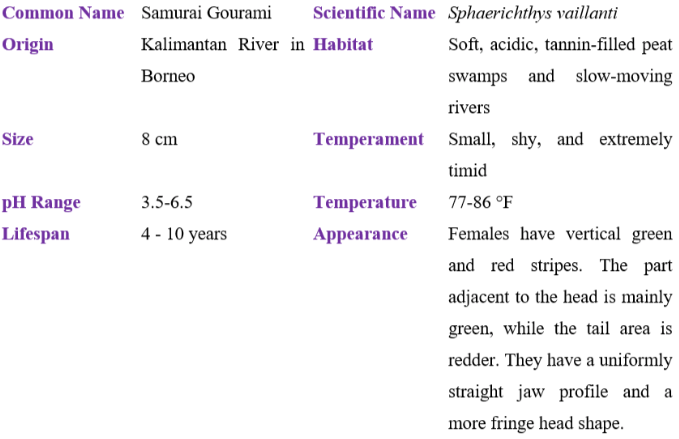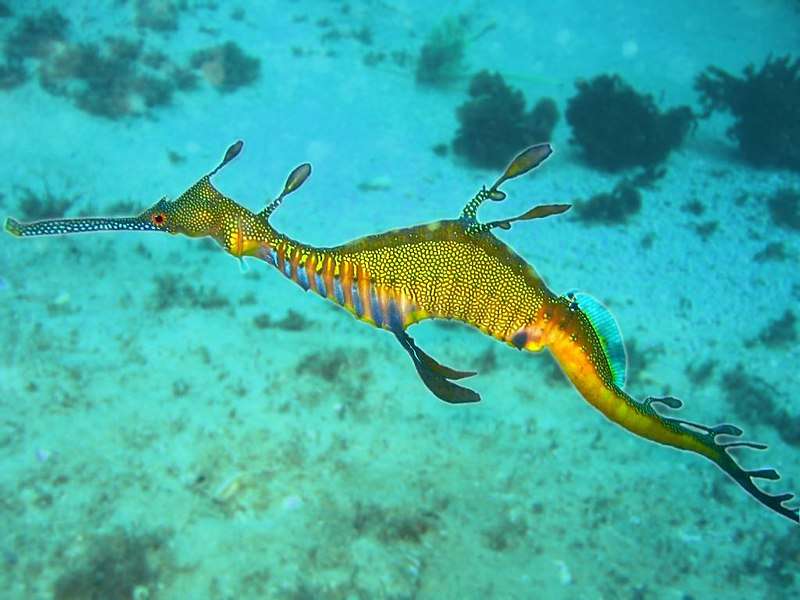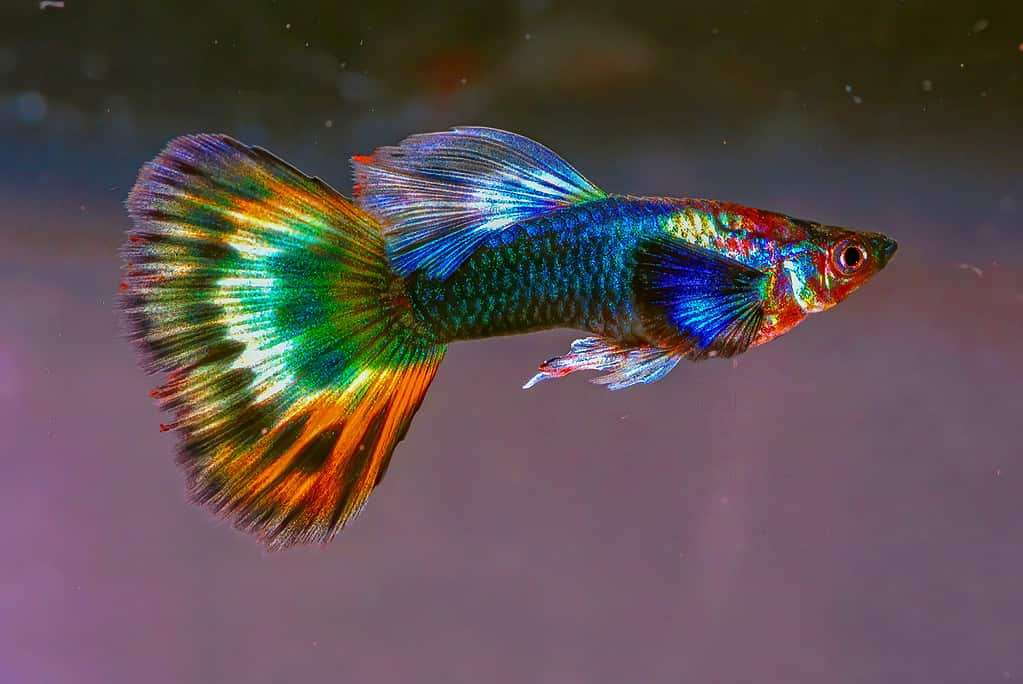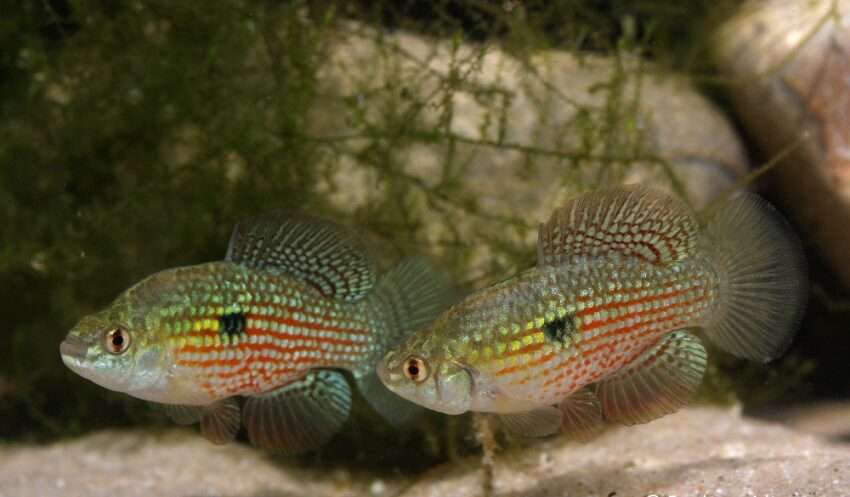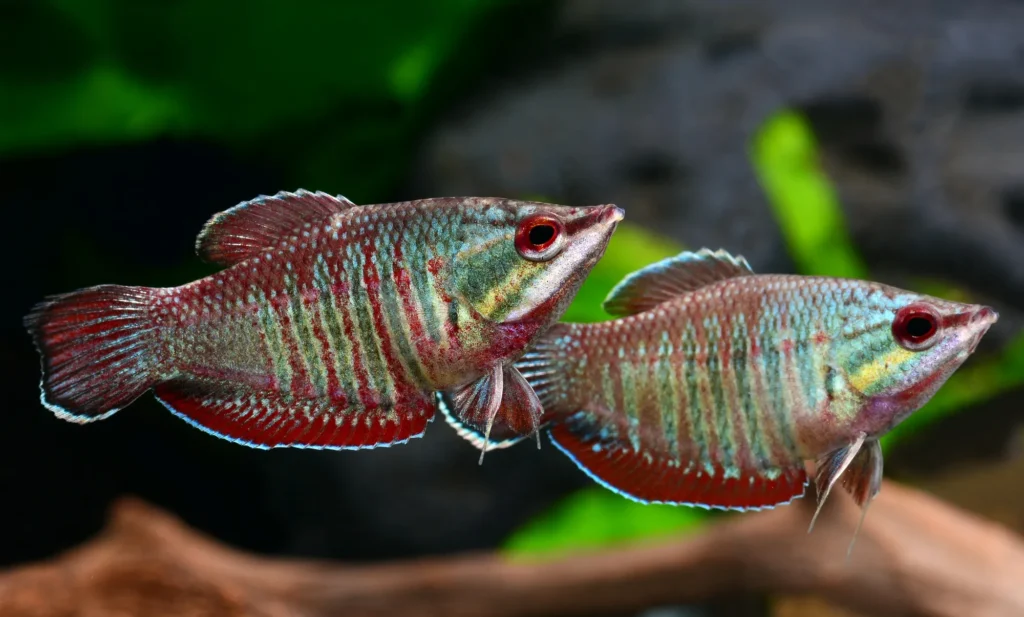
Size
8 cm
Physical Characteristics
They feature a more angular head shape and a uniformly straight jaw profile. Men typically look fairer and are lighter browny-gray than females. They have brown skin. When they are holding eggs in their jaws, the wide skin around their lips expands.
Temperament
The Samurai Gourami is a little, reticent species that does best in low light. They should feel more secure in their water tanks, which should be thickly planted with aquatic plants that can flourish in low light and have a lot of floating plants.
Habitat
Believed to live primarily in peat bogs and the adjacent black water streams, however they can occasionally be found in clean water settings. The former are found in wooded areas and have water that is usually tinted a dark brown color from humic acids and other compounds generated from decomposing organic matter.
Keeping as Pet
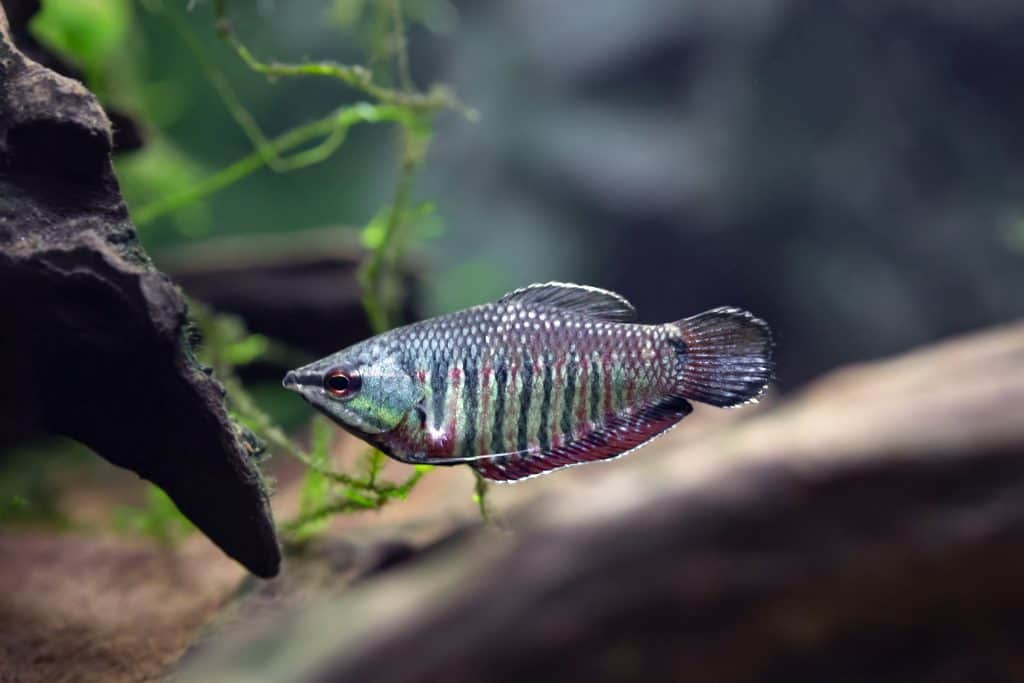
- Tank Size
Tanks for samurai gourami should be built up to resemble the fish’s native habitat. Your fish will remain content and healthy with this setup. The ideal container for a group of up to eight samurai gourami is a 30-gallon tank.
- Water Parameters
Type of water: freshwater
pH: 3.5-6.5 \sGH: 1-54
Temperature: 77-86 degrees Fahrenheit
- Feeding
In their natural environment, samurai gouramis dine on a variety of foods. The fish are fussy eaters and frequently favour zooplankton, worms, tiny crustaceans, and insect larvae over plant material. Samurai gouramis are likely to prefer live fish food over dry food, which keeps them healthy. If necessary, the fish can be gradually transitioned from live fish food to frozen food to assist them acclimatize.
Samurai gouramis require a variety of foods, including live (and frozen) brine shrimp, micro worms, mosquito larvae, and daphnia grindal. Samurai gouramis should be fed in little doses twice daily. Samurai gourami shouldn’t be fed more than they can consume in two minutes unless they need to go out and hunt their meal first.
Samurai gouramis need to eat a variety of fresh vegetables like lettuce and spinach as well as live fish meal..
- Tank mates
Samurai gouramis prefer to keep company with other individuals of the same species. The ideal reproductive environment for samurai gourami requires at least six of them in each tank. As long as their tank mates are not loud fish, samurai gouramis can live alongside other species. Samurai gouramis exhibit hostility while mating, which causes problems with other fish in the tank.
Samurai gouramis make excellent tankmates for bottom-dwelling corydoras. Another choice is pangio species, which are peaceful and hide throughout the day like the kuhli loach. These fish make suitable tank mates for samurai gouramis since harlequin rasbora, rosy barbs, and some tetra fish have the same aquarium requirements.
Samurai gouramis should be kept in tanks with non-fish species such as mystery snails, crayfish, dwarf and amano shrimp. The samurai gourami won’t be bothered by these additions that aren’t fish, but they can liven up your tank arrangement.
Table
